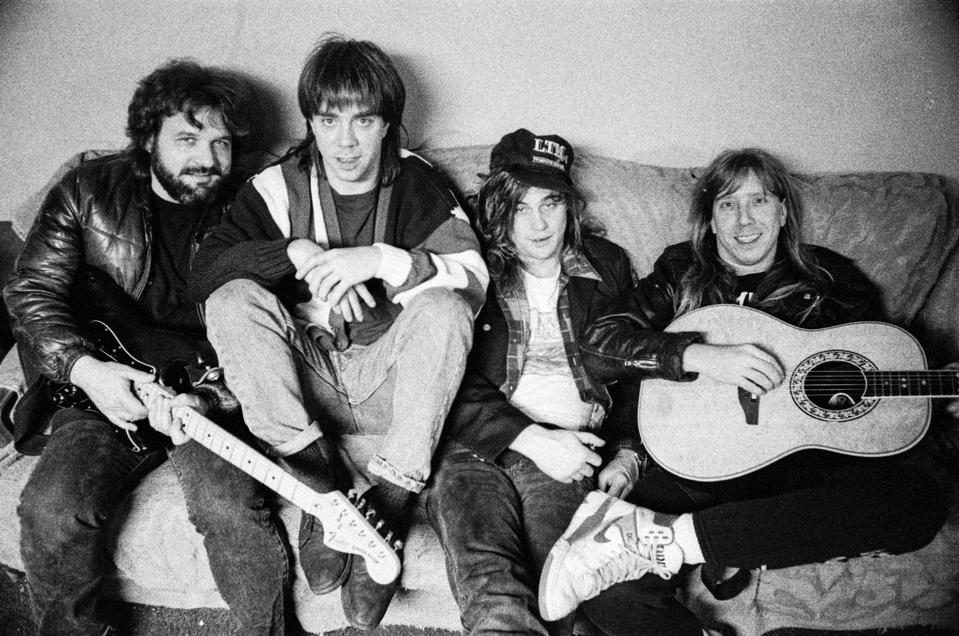On the eve of New York Fashion Week, the Cutting Room in New York City wasn’t just hosting another fashion show—it was staging a resurrection. Andrew Charles, Andy Hilfiger’s rock-inspired clothing label, roared back into the spotlight.
For those who know Andy, this wasn’t so much a comeback as a reminder of his roots. “It’s not about reinvention,” Hilfiger remarked after the show. “It’s about staying true to the music that shaped me, and translating that energy into clothes people want to live in.”
Andy Hilfiger: Rock Roots And Hip-Hop Legacy
Before his older brother Tommy built out his billion-dollar fashion brand Tommy Hilfiger, Andy Hilfiger was on the road tour managing, in stores tuning up guitars and on stage singing lead while chasing riffs. Music was his first language long before he stepped foot into fashion. Rock’ N’ Roll culture wasn’t a simple influence Andy picked up—it was the backdrop of his life and the building block to his conscious move to blend his first love with fashion.
His friendships with musicians gave him direct access to the aesthetic of rock stars, from ripped denim to leather jackets dripping with attitude. And he used those skills to later help his brother expand the Hilfiger empire in the 1990s. Andy was instrumental in bridging the worlds of fashion and hip hop together – a cultural fusion that defined his career. The Tommy Jeans division of Tommy Hilfiger was created under Andy’s direction and helped skyrocket the brand to becoming a staple in music videos and album covers, as well as cementing itself as a streetwear powerhouse during the golden age of hip-hop in the late nineties. “I wanted to bring the feeling of music directly to the musicians, and it was hip-hop that welcomed us in,” said Andy Hilfiger.
While Tommy brought the vision, Andy got his authenticity in music, and his understanding of how clothing could amplify culture. From connecting with hip-hop artist Grand Puba at JFK to delivering the iconic Tommy Jeans rugby worn by Snoop Dogg’s during his Saturday Night Live debut in 1994, Andy was on the pulse of culture and trends.
Most famously, he was at the helm of the 1996 Tommy Jeans campaign, when Aaliyah brought her mix of streetwear and R&B to the brand’s iconic baggy jeans. A look still adored today.
Andrew Charles: Fashion With a Guitar Riff
Today, Andy’s Andrew Charles label borrows from both legacies: rebellious rock aesthetic layered with the authenticity Andy honed in hip hop’s golden era.
Launched in 2011, Andrew Charles was Andy’s first direct translation of his music-first worldview into a standalone fashion brand. Partnering with rock icon Steven Tyler of Aerosmith, he positioned the label squarely at the intersection of music and fashion, underscoring the brand’s DNA: clothing designed not for the boardroom but for backstage – fitted leather jackets, washed-out tees, star motifs, and an unapologetic rock aesthetic. The full collection was sold in store at Macy’s departments stores before pivoting into a jewelry and accessories line available online.
Today, the brand roared back to New York City with a full collection. The pieces range from $59 for T-shirts and $150 for hoodies with jeans and up jackets priced up to $325. Much of the collection can be worn by men or women with each piece appearing as if it had a story to tell— capturing the edge with details such as their signature star, metallic motifs, and patched denim, amplifying the vibe. Andy Hilfiger, and his wife Kim are working with Teddy Sadaka of Apparel Production, as the licensee and production partner of the collection.
Over the past five years, fashion has gone through a rollercoaster, from an accelerated pandemic whiplash into a slower, more polarized market, leaving whitespace for brands that can pair design with durable economics and credible impact.
In an age of wellness studios, daily athleisure, and minimalist basics, the raw energy of rock fashion feels fresh again – alongside Andy Hilfiger’s authentic music journey.
Sometimes getting the band back together – is what it’s all about.

